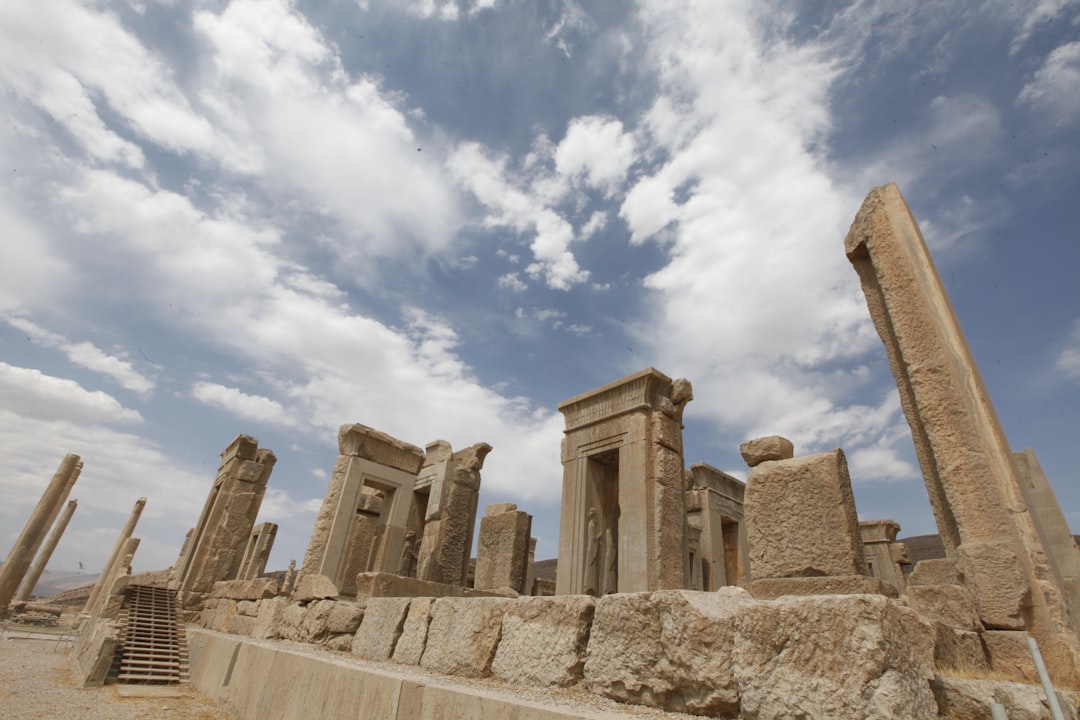When we think of ancient empires, names like Rome, Greece, and Egypt often come to mind. Yet, there’s one empire that stands at the crossroads of history, shaping the future of the Middle East and beyond: the Persian Empire. And at the heart of its rise is one of the most remarkable figures in history—Cyrus the Great.
In this post, we’ll explore how Cyrus the Great founded the Achaemenid Empire and the legacy of his vision that continues to resonate even today.
🌍 The Rise of the Achaemenid Empire
Before the Achaemenid dynasty came to power, Persia (modern-day Iran) was a collection of tribes and city-states under the control of various regional powers. The Medes, one of these tribes, played a prominent role in the region. However, it was under the leadership of Cyrus II, later known as Cyrus the Great, that Persia transformed into one of the most expansive empires in the world.
Cyrus’s Early Life: A Prince Among Tribes
Born around 600 BCE in the region of Anshan (in modern-day southwestern Iran), Cyrus was a member of the Achaemenid clan. The Achaemenids were not yet the ruling power, but they had noble blood. Cyrus’s early years were marked by tribal conflicts and the eventual rise of the Medes under King Astyages.
According to legend, Cyrus’s grandfather, Astyages, had a prophetic dream that his granddaughter’s son (Cyrus) would overthrow him. Fearing this, Astyages attempted to kill the infant Cyrus, but he was spared and raised in a different part of the kingdom. As Cyrus grew up, he became an exceptional leader, eventually leading a rebellion against the Medes.
⚔️ Cyrus the Great: The Founder of the Persian Empire
Around 550 BCE, Cyrus led a successful revolt against King Astyages, securing the support of the Medes who were dissatisfied with their king. By conquering Media, Cyrus not only gained the throne of Persia but also became the ruler of much of the Iranian plateau.
What followed was nothing short of extraordinary: Cyrus set out to expand his realm, conquering the Lydian Empire in Asia Minor, the Neo-Babylonian Empire, and many other regions. The Persian Empire under Cyrus stretched from the Mediterranean Sea in the west to the Indus River in the east—encompassing a vast and diverse array of peoples, languages, and cultures.
The Persian Way of Rule: Tolerance and Respect
One of the defining characteristics of Cyrus’s reign was his approach to governance. Unlike many of his contemporaries, who sought to subjugate and impose their rule on conquered peoples, Cyrus was known for his remarkable tolerance and respect for the customs and religions of the lands he conquered.
For example, when Cyrus captured Babylon in 539 BCE, he famously allowed the Babylonian exiles—the Jews who had been taken captive by the Babylonians—to return to their homeland and rebuild their temple in Jerusalem. This act of mercy is immortalized in the Cyrus Cylinder, a clay cylinder inscribed with a proclamation of Cyrus’s policies. This cylinder is considered one of the earliest declarations of human rights, reflecting his philosophy of tolerating religious and cultural differences.
🏛️ The Legacy of Cyrus the Great
Cyrus the Great’s legacy is far-reaching. He not only established the Persian Empire but also laid the foundation for a dynasty that would last for over two centuries. The Achaemenid Empire, which spanned from 550 BCE to 330 BCE, would become one of the most powerful empires the world had ever seen.
Under the Achaemenids, Persia became a symbol of administrative efficiency. Cyrus and his successors developed a system of satrapies (provinces) to govern the empire, with local leaders who answered to the central authority in Persepolis, the empire's capital. This system allowed the vast empire to function with remarkable coherence, enabling Persia to thrive for generations.
Cyrus’s Successors: The Achaemenid Dynasty
After Cyrus’s death in 530 BCE, his son Cambyses II took over and expanded the empire by conquering Egypt. His successors, including Darius the Great and Xerxes I, would continue Cyrus’s legacy, further strengthening the empire and engaging in monumental building projects such as the construction of the royal capital, Persepolis.
The Persian Empire would eventually face challenges from both internal rebellions and external forces, but it remained a dominant power for centuries—until its conquest by Alexander the Great in 330 BCE.
🌟 Cyrus’s Vision and Influence
What made Cyrus the Great so exceptional was his vision—not just for his empire, but for the principles of governance that would influence future rulers for centuries to come.
His ideas about leadership were built on justice, mercy, and respect for others—ideas that contrast sharply with the autocratic, violent tendencies of many ancient rulers. His actions set a standard for subsequent rulers who admired his fairness and innovative policies.
Even today, Cyrus’s impact can be felt. The Cyrus Cylinder, which lays out his policies, is often seen as a precursor to the modern concept of human rights. His influence on governance, cultural tolerance, and the rule of law continues to resonate.
🌸 The Enduring Legacy of the Achaemenids
While the Achaemenid Empire eventually fell to Alexander the Great, Cyrus the Great’s legacy lives on as the symbol of an empire founded on fairness, religious tolerance, and a respect for the dignity of all people. His name is remembered not only as a conqueror but as a visionary who believed that empires could be built on cooperation, not just domination.
Today, the Achaemenid Empire is celebrated not only in Iran but around the world for its groundbreaking achievements in governance, culture, and diplomacy.
✨ Final Thoughts
Cyrus the Great and the Achaemenid dynasty were instrumental in shaping the ancient world. Their empire became the model for future civilizations, and their ideas about leadership and governance are still relevant today. The Persian Empire was not just a territorial power; it was a symbol of how compassion and wisdom could guide a people toward greatness.
Have you ever wondered how the Achaemenid Empire influenced the modern world? Let’s dive deeper into the fascinating history of Persia together!





